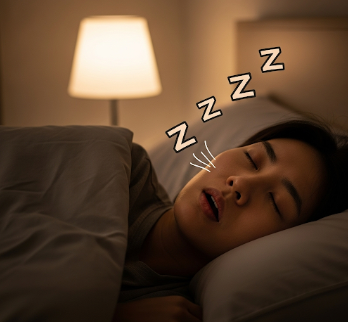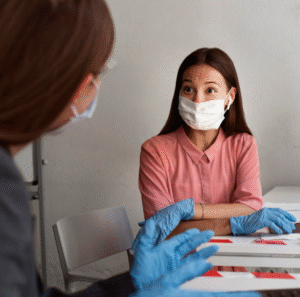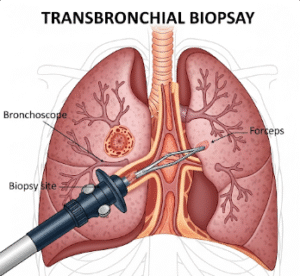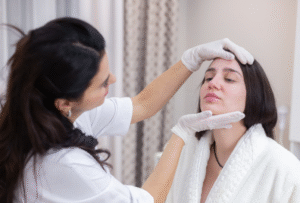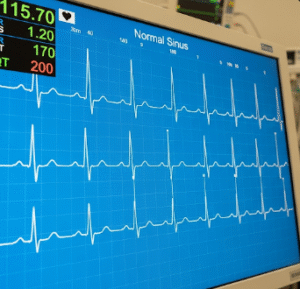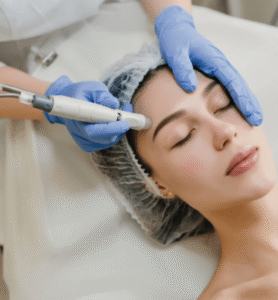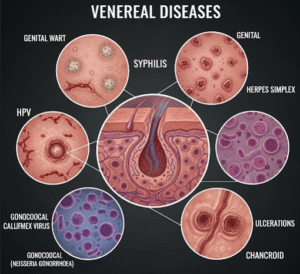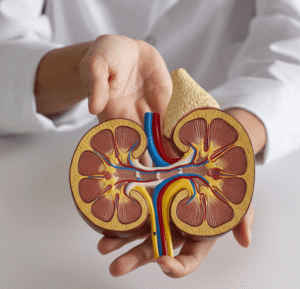➤ Overview
Snoring is the noisy vibration of the soft tissues in the upper airway during sleep, often resulting in a harsh or rattling sound. While occasional snoring is common, frequent or loud snoring may indicate underlying sleep disorders, such as obstructive sleep apnea (OSA).
In South Korea, snoring is assessed by sleep specialists, ENT (ear, nose, and throat) doctors, and pulmonologists. Proper evaluation can identify sleep-disordered breathing, prevent cardiovascular complications, and improve sleep quality for both the patient and their partner.
➤ Key Facts
→ Snoring affects all age groups, but is more common in adult men and older individuals.
→ Frequent snoring may signal obstructive sleep apnea (OSA), a condition with significant health risks.
→ In Korea, overnight sleep studies, ENT examinations, and imaging tests are commonly used for evaluation.
→ Lifestyle factors, such as obesity, alcohol consumption, and smoking, can worsen snoring.
→ Untreated snoring with OSA can lead to high blood pressure, heart disease, stroke, and daytime sleepiness.
→ Snoring may disrupt the sleep of bed partners, affecting relationships and overall quality of life.
➤ What is Snoring?
Snoring is the result of turbulent airflow causing vibration of soft tissues in the throat, nasal passages, or mouth during sleep. Its severity and characteristics vary:
→ Primary (simple) snoring – Occasional or mild snoring without apnea events.
→ Obstructive sleep apnea-related snoring – Snoring accompanied by repeated pauses in breathing.
→ Nasal snoring – Caused by nasal obstruction, deviated septum, or allergies.
→ Throat or mouth snoring – Due to relaxed tongue muscles, enlarged tonsils, or soft palate vibration.
→ Positional snoring – Occurs more when sleeping on the back due to tongue or soft tissue collapse.
Korean sleep specialists assess snoring patterns, severity, and associated symptoms to differentiate benign snoring from serious sleep disorders.
➤ What Symptoms are Related to Snoring?
Snoring may be accompanied by other related symptoms that indicate underlying conditions:
→ Loud, chronic snoring noticeable by the bed partner.
→ Pauses in breathing during sleep, often followed by gasping or choking.
→ Excessive daytime sleepiness due to fragmented sleep.
→ Morning headaches caused by low oxygen levels overnight.
→ Dry mouth or sore throat upon waking.
→ Restless sleep or frequent awakenings.
→ Irritability, mood changes, or difficulty concentrating.
→ High blood pressure or cardiovascular concerns in severe cases.
➤ What Causes / Possible Causes?
Snoring results from partial obstruction of the airway due to anatomical, physiological, or lifestyle factors:
→ Obstructive sleep apnea (OSA) – Most significant cause of pathological snoring.
→ Nasal obstruction – Deviated septum, nasal polyps, or chronic sinusitis.
→ Enlarged tonsils or adenoids – Common in children and some adults.
→ Obesity – Excess fatty tissue around the neck narrows the airway.
→ Alcohol or sedatives – Relax throat muscles, increasing airway collapse.
→ Age-related changes – Decreased muscle tone in the upper airway.
→ Sleep position – Supine position increases likelihood of airway obstruction.
→ Smoking – Causes inflammation and swelling in the airway tissues.
→ Congenital or structural abnormalities – Small jaw, large tongue, or elongated soft palate.
➤ When Should I See My Doctor?
Medical evaluation is necessary if snoring is persistent, loud, or associated with sleep-disordered breathing:
→ Loud snoring every night or multiple nights per week.
→ Pauses in breathing or choking/gasping during sleep.
→ Excessive daytime sleepiness, fatigue, or concentration problems.
→ High blood pressure or cardiovascular risk factors with snoring.
→ Behavioral or learning issues in children due to sleep disruption.
→ Snoring affecting bed partners or relationships.
→ Snoring resistant to lifestyle modifications, such as weight loss or positional changes.
➤ Care and Treatment
Management depends on severity, underlying cause, and impact on daily life:
→ Lifestyle modifications – Weight loss, reducing alcohol intake, quitting smoking, and avoiding sedatives.
→ Positional therapy – Encouraging side sleeping to reduce airway obstruction.
→ Nasal devices or dilators – To improve nasal airflow.
→ Oral appliances – Mandibular advancement devices to keep the airway open.
→ Continuous positive airway pressure (CPAP) – Gold standard for moderate to severe OSA.
→ Surgical interventions – Tonsillectomy, uvulopalatopharyngoplasty, or septoplasty if structural issues exist.
→ Sleep hygiene education – Establishing regular sleep schedules and healthy sleep environments.
→ Monitoring and follow-up – Ensuring treatment effectiveness and adjusting therapy as needed.
➤ Treatment Options in Korea
South Korea provides comprehensive care for snoring, combining diagnostics, conservative therapy, and advanced surgical interventions:
Diagnosis in Korea
→ Polysomnography (overnight sleep study) – Detects snoring intensity, breathing pauses, and oxygen desaturation.
→ ENT examination – Evaluates tonsils, adenoids, nasal passages, and airway anatomy.
→ Imaging tests – CT or MRI for structural abnormalities if needed.
→ Questionnaires and scales – Epworth Sleepiness Scale, Berlin Questionnaire.
Medical Treatments in Korea
→ CPAP therapy for obstructive sleep apnea.
→ Oral appliances – Custom-fitted devices for airway support.
→ Medications – Limited role, but sometimes used for nasal congestion or allergies.
→ Behavioral and lifestyle interventions – Weight management, smoking cessation, and positional therapy.
Advanced Therapies in Korea
→ Surgical procedures – Tonsillectomy, uvulopalatopharyngoplasty, nasal septum correction.
→ Laser-assisted or minimally invasive techniques – Reducing soft tissue vibration in the airway.
→ Multidisciplinary care – Sleep specialists, ENT surgeons, and pulmonologists.
→ Integrative approaches – Korean traditional medicine for supportive symptom relief.
Rehabilitation & Support in Korea
→ Guidance on sleep hygiene, lifestyle changes, and adherence to CPAP or oral devices.
→ Counseling to improve daytime alertness and partner satisfaction.
→ Long-term monitoring to prevent complications, enhance sleep quality, and improve overall health.

